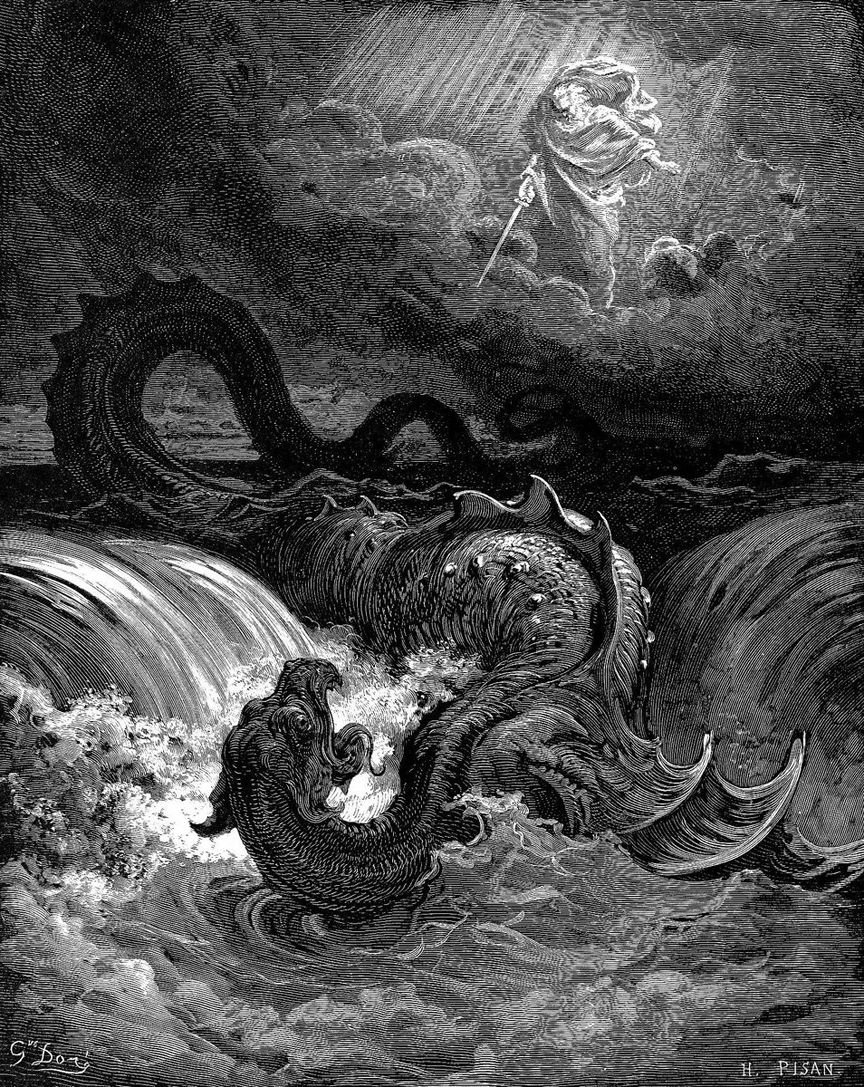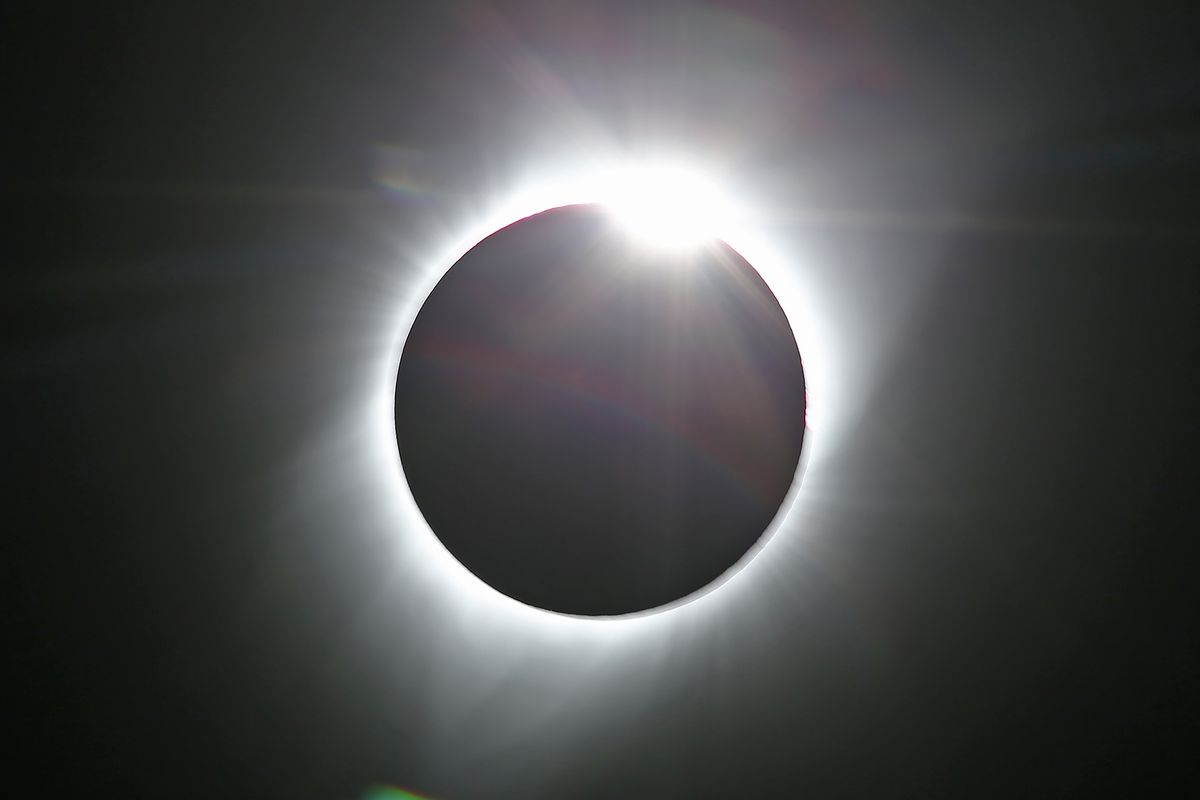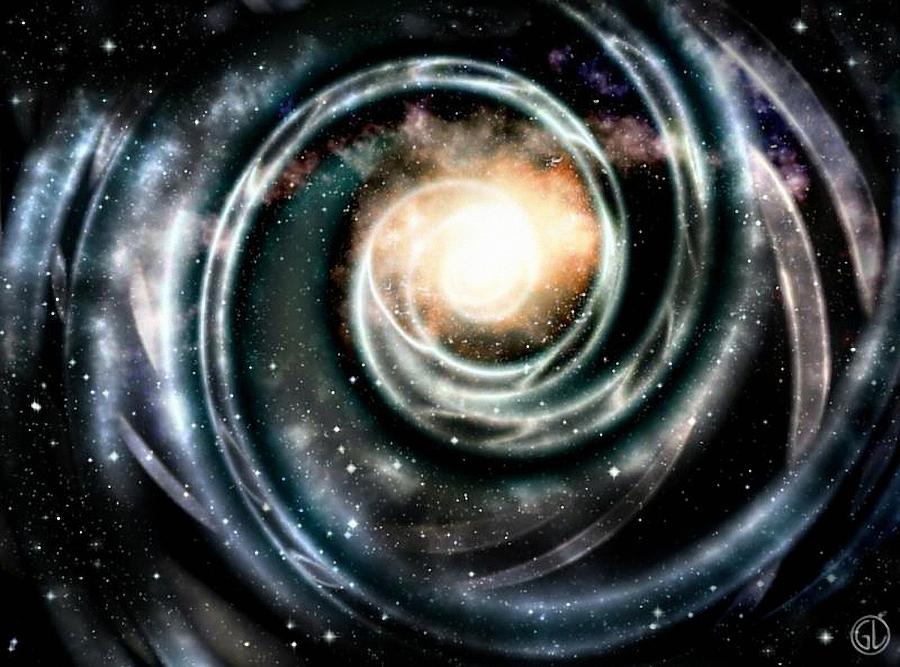Legend of the White Wyrm
Legendary titan of Silver Lake
Shivering in the cold flame of Fallut,
We saw the serpent coiling in darkness.
Climbing the glittering chain of the starry cosmos,
It writhed forth from realms of Chaos.
It was Leviathan, servant of the Dark One,
Who, spiraling from Abyss, wound sky darkness
Around Mazta's throne in readiness,
And in its hunger swallowed the Sun.
Introduction
In the early years of the Post-Cataclysmic era, the abandoned lands of Old Orad were resettled by the peoples of Noghra. In those days the Noghra lunar cult held sway in the Silver Plains and on the shores of Silver Lake. The moon cult paid homage to the Kundalini serpent, an animal totem aspect of the dark sun god Ahriman. Unlike the primary archetype of Ahriman, who personifies chaos and nihilism, the Kundalini represents the transformative aspect of destructive chaos. Whereas Ahriman heralds the negation of reality through the channeling of destructive energies, Kundalini exemplifies how Ahriman's power may be directed to alter reality rather than negate it.
Culture of Origin:
Noghra (Old Ornish)
Date of First Recording:
First century PCE
Date of Setting:
2nd Age of the Sun (Age of Poisoned Sea and Sky, ahistorical)
Noghra (Old Ornish)
Date of First Recording:
First century PCE
Date of Setting:
2nd Age of the Sun (Age of Poisoned Sea and Sky, ahistorical)

Summary
The legend of the White Wyrm is sometimes known as the legend of the Kundalini Leviathan. The word keepers say that the Kundalini emerged as a servant of the Dark God Ahriman during the dawn of the Second Age of the Sun. It was after Mazta, the Sun God of Light, cast Skyfire upon his fallen creation and turned his solar gaze away from humanity that Ahriman rose to claim the mandate of heaven and usher in an era of darkness. To christen his new dominion over this blighted age of night, Ahriman sent an emissary to seize the Throne of the Sun. And so, from the void beyond realms Eternal, the Leviathan serpent came forth to swallow the sun and inaugurate an aeon of never-ending darkness.
The Leviathan compassed its length around the edge of the throne and constricted upon the last rays of Mazta's waning light. As the final glow of heaven smoldered under the dark coils of the abyssal snake, all hope of renewal seemed lost forever. But a miraculous change suddenly took hold. As the Leviathan swallowed and consumed the last embers of the sun, Mazta's light was not extinguished in the serpent's maw but rather the final spark of solar light spurred a sudden and spontaneous change in Ahriman's emissary. The ebon scales of the serpent began to ripple and curl as if the snake burned with inner fire.
The ashen husk of the serpent's molted skin finally shed away to reveal a being transformed by divine light. Rather than a serpent of darkness, the Leviathan emerged from its molting transformed into a being of resplendent silver, streaking across the sky like a bolt of lightning: Kundalini awakened.
As the serpent's inner light continued to shed into the void of space it caused changes in the atmosphere of the Earth below. Struck by flashes of the serpent's silver flame, the denser particles cast into the skies by Mazta's wrathful Skyfire began to sublimate into lighter matter and descend back to earth. Changes wrought in the heavens echoed upon the Earth in the creation of new organic forms adapted to life in the darkness of Ahriman's reign.
The emergence of these new creatures displeased Ahriman (Ahriman the Dark, who yearns only for the oblivion of the Void), and in his wrath the Lord of the Dark Sun struck the Leviathan's shimmering silver body and hurled it to the earth. But even this could not stop the transforming power of the Kundalini, for as the serpent fell into the gravity of the terrestrial sphere it continued to shed its inner light in brilliant bolts of transforming lightning.
Upon the places where this lightning struck, the rocks of the earth transmuted into silver ore and the beasts of the earth residing therein mutated their forms into new shapes wondrous and strange. Some of these creatures possessed the language and intelligence of men and built cities lost to memory in the Deep Zone. The Kundalini's body fell upon the Earth with such force that it collapsed the very ground around it and its shock wave hollowed out a giant pit.

Historical Basis
The legend is clearly related to the White Wyrms of Savadris, a species of reptilian mega fauna native to the waters of Silver Lake and long thought to be extinct but there seems to more background to the tale. The stories of mutations and organic adaptations attributed to the divine powers of the silver serpent have clear analogues in the accounts of frontier travelers and in folktale legends of lost species of the early post-cataclysmic era (the ahistorical era of largely unrecorded memory).

Skepticism
These folklore tales, derived from lost oral traditions, recount weird wonders of strange anthropomorphic beings, not-quite-human inheritors of the shattered Precursor world such as the “Serardians,” a lost civilization of sapient, two-legged reptiles conditioned to live in the blighted, post-cataclysmic wasteland. Scholars view nearly all of these so-called “histories” with considerable skepticism and dismiss stories of “lizard men” as fabulous inventions and nothing more. But the impact of such muto folklore upon the common cultural imagination cannot be discounted out of hand and the Kundalini myth has served to anchor such stories within an easily understood narrative framework of myth.
Mazta's light burned away the scales of night,
The ashen husk fell to silent Earth.
All was placid and silent in the darkness of night.
But Leviathan is no more. Behold transformation!
The sky is silver with white flame.
The void snake is born again.
Now Kundalini, awakened spirit, speaks:
“I beheld the Void;
I swallowed the sun light; I became light,
And I will reveal the moon when I wish.
So be it, Mazta's light is great.”
Waters of the inner Earth, stirred by the violence of the Kundalini's impact seeped upward through the cracked crust of the scorched surface world and filled this pit, which came to be known as Silver Lake. The gargantuan white wyrm sea serpents that once teemed in the waters of Silver Lake were thought to be the divine children of the Kundalini and worshiped as messengers of the great silver serpent.
The Kundalini, weakened by its fall but unslain, rose thereafter from its silver waters to spite the Dark One and defy his will. Thus the Kundalini stole in secret from his earthly domain to meddle in Ahriman's mandate and sow storms in heaven, spread chaos to challenge the void's nothingness, and cast light to split darkness with bolts of purest silver flame. It is said that even during the dimmest grey days of Ahriman's rule in the Second Age of
the Sun, the Kundalini dared to wrap its body around the benighted shade of the sacred moon and shine forth its light so brightly that it momentarily scattered the Cloudveil and revealed the obscured shapes of heaven. The image of the silver serpent circling the moon thus became a key motif in the early worship of the Kundalini cult which rose in the lands of Old Orad after Skybreak at the dawn of the sun's Third Age.
In Literature
The most widely circulated narrative source for the Kundalini myth may be found in Ages of the Sun, the essential sacred text of the Two Sun religion. The earliest recorded origin of the myth, however, was derived from oral tradition and first compiled in the Silver Legend Codex. The contents of this ancient bark paper manuscript have been copied over the centuries in the sacred lore of the Noghra people widely known as the Myth Cycle of the Silver Secret.
The myth cycle was written in Old Ornish and its earliest manuscript provenance may be dated to the first century of the Post-Cataclysmic Era. The text is a verse narrative written in irregular tale-rhyme structure.
Even as the sun returned to prominence and the new Solar cult of Mazta took hold, the devotees of the Kundalini continued to await the triumphant rise of the Silver Serpent. But centuries have now passed and the sun gods have all but displaced the old religion of the Kundalini and the other primordial spirit forms. Even as the priests of the sun spread their own solar creed to eclipse the old ways, the children of the sun
hunted the sacred white wyrms of Silver Lake until there were none left to chase.
In spite of this, there are still Spirit Talkers who preserve the old words and the old ways. These "Moon Children" are the descendants of those who stood on the shores of Silver Lake under Skybreak waiting for the return of the Kundalini. Their devotion endures. Though forgotten by many and few in number, they are still waiting.
Cultural Reception
The solar cult of Pachuco utterly rejects the divinity of the Kundalini serpent and considers its worship to be a heresy. Until the Silver Clans converted to worship of the sun gods, this difference of belief was a source of considerable conflict in the jungles of Pachuco. The Two Sun religion of Pimaca, however, with its dualistic worship of both the light and dark sun archetypes, views the Kundalini as an aspect of the Dark Sun Ahriman and thus as a divine emissary of the same rank as Mazta's own sacred messenger: the Thunderbird.
On the other hand, the Black Sun cult of the Vril regards all veneration of the Kundalini as the most vile heresy imaginable. To the Vril, Kundalini is a traitorous being responsible for the decline of the Second Age and the return of Mazta. Pimaca theologians have speculated that the story of the Kundalini is dangerous to the beliefs of the Vril, for it affirms that darkness can be dispelled by light and that chaos itself, one of Ahriman's fundamental destructive aspects, is itself a potentially generative force for positive change in the cosmos.



Comments